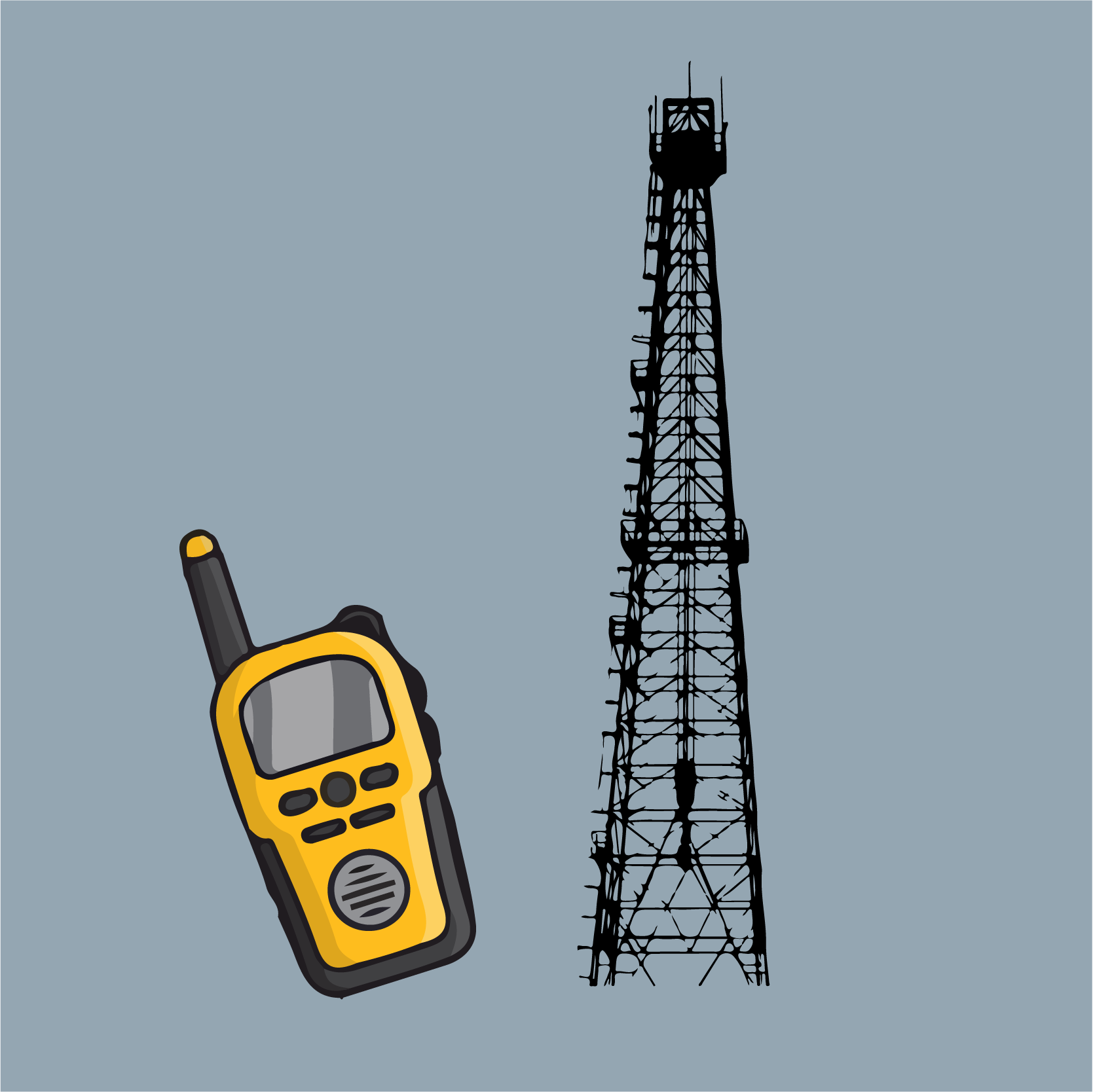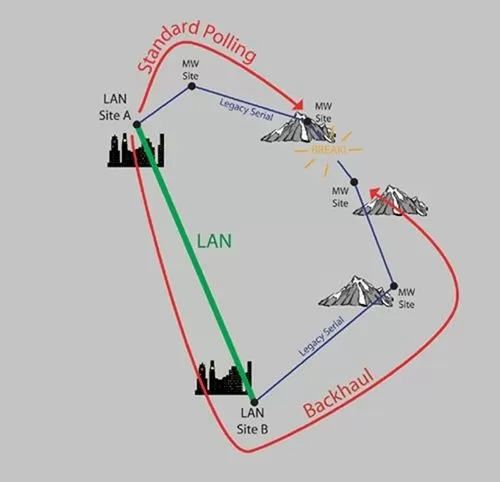Download our free Monitoring Fundamentals Tutorial.
An introduction to Monitoring Fundamentals strictly from the perspective of telecom network alarm management.
1-800-693-0351
Have a specific question? Ask our team of expert engineers and get a specific answer!
Sign up for the next DPS Factory Training!

Whether you're new to our equipment or you've used it for years, DPS factory training is the best way to get more from your monitoring.
Reserve Your Seat TodayThe transmission of data through microwave in telecommunication involves the sending and receiving of microwave signals over a microwave link. This microwave link is made up of a string of microwave radio antennas. They're located at the top of towers at various microwave sites.
A Microwave link is a communication system, that bridges radio signals, to transmit data between two or more fixed locations. Multiple microwave links make up a microwave network.
Microwave links are used for point-to-point communications. The small length of their waves allows for antennas to direct them in narrow beams. The beams can be pointed directly at the microwave receiving antenna.
This allows nearby microwave gear to use the same frequencies without interfering with each other, as lower frequency radio waves do. Another benefit of microwave links is that the higher frequency of microwaves gives the microwave band a very large information-carrying capacity.
A simple microwave link includes four major elements:
These components work in harmony to create a reliable and efficient communication system. The entire process operates nearly at the speed of light, ensuring instantaneous transmission even over vast distances. With these capabilities, microwave links are an important part of global communications infrastructure.

Maintaining a microwave link network involves numerous challenges and management considerations:
Distance and Terrain: The separation between terminals and the geographical terrain, such as water bodies and forests, can impact signal transmission.
Frequency Management: Licensing costs, availability, and susceptibility to rain fading play key roles in frequency operations.
Interference and Fading: Allocating clear frequency pairs is vital to minimize interference, and addressing fading, dispersion, and multipath distortion ensures reliable communication.
Structural Considerations: Antenna size, feedline properties, and the stability of supporting structures must be engineered to prevent beam misdirection.
Environmental Impacts: Managing moisture inside waveguides and accounting for sun transits that could cause outages are crucial for maintaining signal integrity.
Regulatory and Cost Concerns: Permissions from governmental bodies and cost-benefit analyses, including maintenance costs, are essential for operational efficiency.
Equipment and Staffing: Ensuring the availability of equipment, spares, and skilled personnel is vital for smooth network operation.
Microwave gear can be used to transmit both analog and digital microwave signals. Analog microwave transmission often saves money for microwave site staff. It doesn't require the purchase of any new equipment.
You also don't have to train your staff on new transport systems. An extra benefit of familiar analog microwave transmission is that your operators know its exact transport capacity.
Users of digital microwave transmission find it easier to obtain support and gear for their systems. That's because digital transmission is the newer, more advanced form of microwave communication. Increased microwave transmission speed will also allow for more traffic - including remote monitoring data.
You need to monitor all of your mission-critical microwave gear, regardless of whether your transmission lines are coaxial cables or waveguides. It doesn't matter what your microwave transmission method is, either. Your equipment is too vital to forget about. Most microwave sites are remote and don't get visited too often when things are running smoothly. This also makes them easy targets for vandalism and theft.
Remote monitoring enables you to quickly respond to microwave transmission errors. It's important to know exactly which piece of equipment is having the issue, and where it is. Otherwise, you waste an expensive truck roll just figuring out what the problem is. Getting notified the moment an issue arises at a site gives your company the ability to focus on your goals.
You need to be able to bring your network back online as soon as possible when there's a problem. Don't wait for the next "Act of God" to convince your company to invest in network monitoring gear. Protect your revenue and safeguard your reputation with your customers by being prepared for the next event.
Microwave sites are most likely found in a ring formation. That's why you can use your network monitoring system to perform advanced monitoring applications. One such technique for determining the locations of problems is ring polling. This troubleshooting technique will also allow you to continue microwave transmission during a break between single sites.
Microwave data is sent from site to site sequentially and can be sent from either side. This is known as 'backhauling'. During a break, you can continue transmitting data by simply sending messages in two directions.

This will also allow you to identify where a problem has occurred. You just need to find the site where the microwave radio transmission has stopped.
The NetGuardian 864A RTU is an advanced remote that can be used for your ring polls. It also works for other microwave monitoring functions. Packed into a compact, 19-inch single rack unit, the NetGuardian 864A includes 64 discrete alarms and 8 analog alarms.
The 864A can also ping 32 network elements and control 8 relays. This provides you with the maximum point capacity for your microwave sites.
The NetGuardian 864A also has an internal modem, so if there's no LAN connection possible, you can still access your RTU. The 864A will give you the visibility you must have of your microwave transmission equipment. It has support for a number of different protocols including SNMP, DNP3, and more.
Don't let a major network outage destroy your reputation as a reliable service provider. Deploy a NetGuardian to monitor your microwave transmission devices. This ensures that your customers receive the industry-leading network up-time they deserve.
Related Products:
Related Topics: